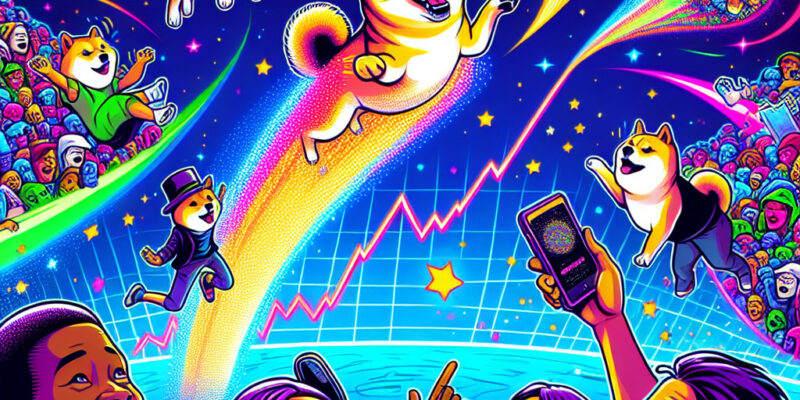DOGE Soars 9%: Shiba Inu Surge Ignites Memecoin Craze

Cryptocurrency markets are often volatile, but few phenomena are as unpredictable and intriguing as the sudden skywards surges of memecoins. Recently, Dogecoin (DOGE) has experienced a notable increase in value, climbing by an impressive 9%. This sudden spike seems to be rekindling interest in the broader category of memecoins, which, as digital currencies, are characterized by their origins in internet culture and the playful communities that support them.
The latest surge in DOGE’s price is not an isolated incident. Its ascent has been triggered, in part, by a parallel rise in the interest for another popular memecoin, Shiba Inu. The links between these two, while not direct, are emblematic of the memecoin market’s unique dynamics, where sentiment and social media buzz can drive significant market movements. Unlike traditional cryptocurrencies such as Bitcoin and Ethereum, memecoins often do not lay claim to foundational technology or clear utility. Instead, their value is often dictated by community backing and viral trends.
The fascination with memecoins stretches back to Dogecoin’s own origin story. Launched in 2013 as a lighthearted response to the seriousness of Bitcoin, Dogecoin was inspired by the popular “Doge” meme featuring a Shiba Inu dog. What started as a joke has since evolved into a cultural phenomenon, with an enthusiastic community and even some practical applications, such as tipping creators online and raising funds for charitable causes.
Shiba Inu, introduced in 2020, sought to emulate Dogecoin’s success. Branding itself as the “Dogecoin killer,” it leaned heavily into its meme origins and quickly built a substantial following. Its whimsical nature, coupled with a low entry price, made it an attractive option for new investors looking to participate in the cryptocurrency market.
This burgeoning interest in memecoins has ignited debates among financial experts. Critics often dismiss them as speculative investments, likening them to fads that lack the grounding of tangible assets or intrinsic value. However, supporters argue that memecoins are no less speculative than gold or contemporary art, asserting that value is a social construct. They emphasize the importance of community and shared belief systems, which can be just as powerful as traditional financial metrics in determining an asset’s worth.
Investment in memecoins certainly carries risks. The volatility that defines this sector means that prices can plummet just as quickly as they rise. This characteristic, however, does not deter enthusiasts who view these coins as more than just financial ventures. For many, they’re part of a larger movement that blends finance, technology, and the zeitgeist of internet culture — a paradigm where the lines blur between economics and entertainment.
Understanding why people are drawn to these digital assets requires acknowledging the intrinsic value some users find in the collective humor and camaraderie of memecoin communities. Whether through shared inside jokes, or the sheer thrill of participating in something both unpredictable and potentially lucrative, these communities offer a sense of belonging.
The recent uptick in DOGE and Shiba Inu serves as a reminder of the memecoin market’s potential to captivate and surprise. It invites observers to consider the myriad factors influencing digital asset valuation beyond traditional economic principles.
For those thinking about diving into this whimsical world, it’s essential to approach with caution, awareness, and perhaps a sense of humor. After all, in a market as mercurial as this one, today’s meme could be tomorrow’s lesson in volatility — or, conversely, prosperity. As the world watches the memecoin phenomenon continue to evolve, it highlights the unpredictable and often playful nature of digital finance, an arena where the next big thing might just be a simple idea gone viral.













